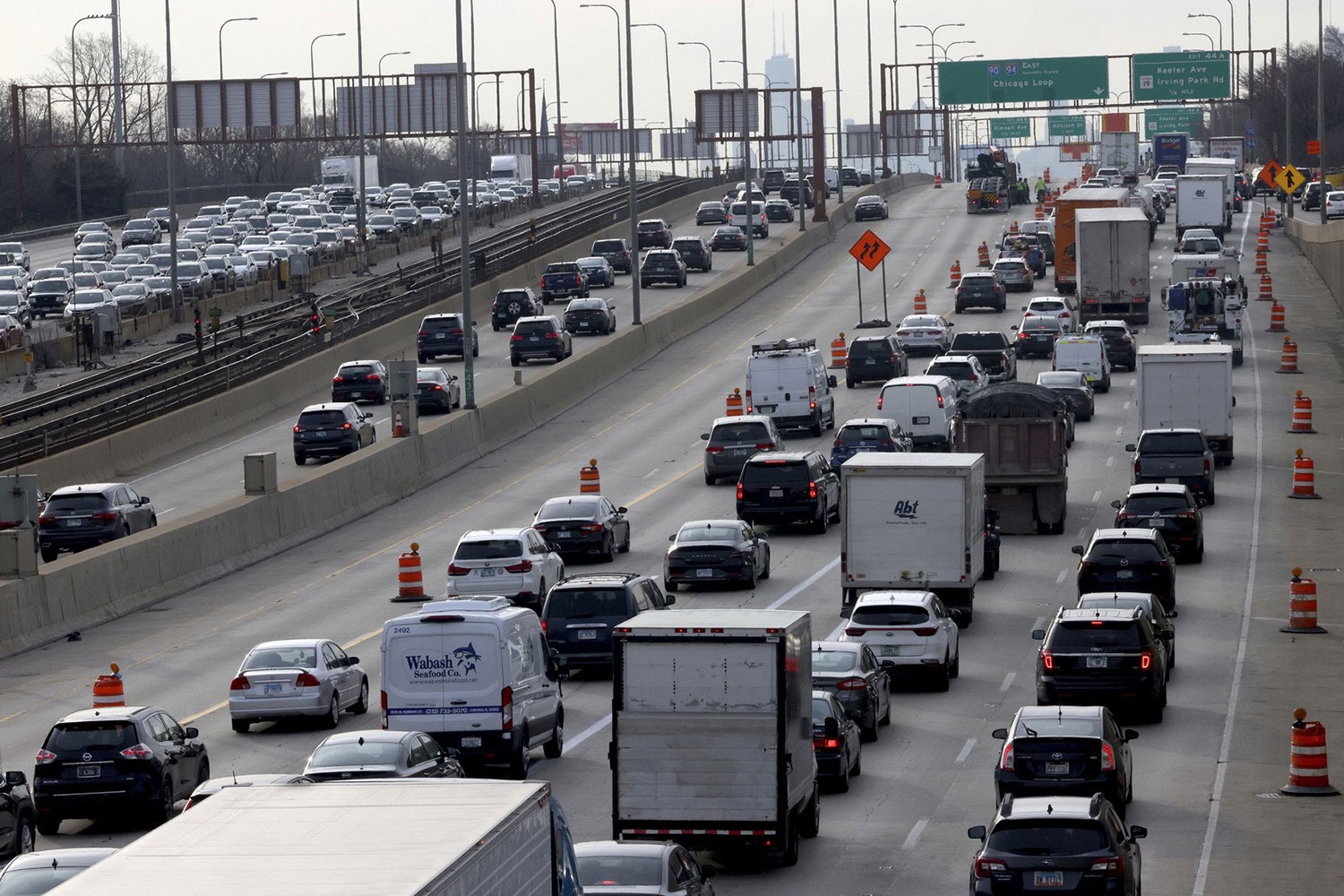I’ve always assumed that the Edens Expressway was named after that garden in the Book of Genesis, where Adam and Eve ate the forbidden fruit. Maybe because there’s a Greek take-out joint named East of Edens, just this side of the highway. Only recently did I learn it’s named after an actual person: William G. Edens, Illinois’s No. 1 good roads man, and one of several local highway namesakes whose biographies have been lost to history, and whose names live on only in pavement.
Edens was a banker, vice president of the Central Trust Company of Chicago, but his real passion was good roads. The Good Roads Movement was an early 20th Century lobby that developed alongside the automobile. Drivers of the new contraptions got awfully sore about spinning their tires in the muck of dirt roads, and began pressuring state governments to lay down paved highways. In 1912, when Edens was elected president of the Illinois Highway Improvement Association, there were 68,012 automobiles registered in Illinois. That year, Edens wrote an Op-ed for the Tribune complaining about the state’s “wretched public highways.”
“In some of our Illinois counties the public roads are impassable to loads for more than 100 days in the year,” Edens wrote. “That means business, social, educational, religious stagnation for nearly a third of every year. It means that the farmer has to hurry his crop to market during a season of good roads. The mud in the road during bad weather rather than the price of corn at the market impels him to sell his crop. If all the money that our farmers lose by the unseasonable marketing of crops were saved for a single year it would build hundreds of miles of road that would be usable the year round.”
Edens proposed a $60 million bond issue that would pay for 4,800 miles of hard roads throughout the state. By the time the proposal reached the ballot, in 1918, there were 389,761 autos in the state, a 573% increase in six years. All those new drivers voted yes, and the good roads measure won a “sweeping majority” throughout the state. Illinois was so diligent about building highways that by 1926, when Route 66 was established, this was the only state where it was paved along its entire route.
In 1951, when Illinois dedicated its first expressway, it seemed only fitting to name it after “the man who pulled Illinois out of the mud.” Edens, who was 88 years old, was present at the dedication, held at Lake-Cook Road, then the highway’s northern terminus. That was probably the last time Edens’s name appeared in a newspaper, except when he died. Today, Edens is an expressway, not a historic figure. That’s not true of John F. Kennedy (I-90), Dwight D. Eisenhower (I-290), Ronald Reagan (I-88), or even Adlai Stevenson (I-55), who lost two presidential elections.
It is true of two other highway namesakes, though: Dan Ryan, and Bishop Ford. Like Edens, Ryan was a road builder. A Machine brat, he was appointed to the Cook County Board in 1923 after the death of his father, board member Dan Ryan Sr. As a member of the Roads and Bridges Committee, he proposed building a system of superhighways throughout Chicago as early as 1939, long before Eisenhower proposed the Interstate Highway System. Once Ryan was elected board president, in 1954, he passed a “massive bond issue” that was pooled with federal money to construct more expressways in Chicago. One of those expressways ran from the Circle Interchange (now the Jane Byrne Circle Interchange, another name that needs no elucidation) to 130th Street. The expressway was originally supposed to be known as the South Route, but Ryan died the year before it opened, in 1962, so naturally, the City Council voted to name it after him. In 2018, mayoral candidate Bill Daley proposed renaming the Dan Ryan after Barack Obama, a politician who would have been better known than the highway bearing his name. Daley’s proposal went nowhere. Ryan’s son — Dan Ryan III — objected.
“Our family has been honored by this for 56 years, and we’d like to keep it that way,” Ryan III said.
Originally, the stretch of I-94 from 95th Street to I-294 was known as the Calumet Expressway, after the river it crosses. It is now known as the Bishop Ford Freeway, after Louis Henry Ford, the presiding bishop of the 8.5 million member Church of God in Christ, and an important figure in Chicago history. Ford delivered the eulogy at Emmett Till’s funeral. He also built his St. Paul Church of God in Christ in the “Widow Clarke House,” Chicago’s oldest structure, built in 1836. Ford renovated the house, then located at 4526 S. Wabash Ave., preserving its ornamental marble fireplaces and Georgia pine pocket doors, while converting it to function as a church. Not only was Ford a celebrated clergyman, he was one of Chicago’s original historic preservationists.
“Chicago has often been referred to as the city which doesn’t have a place for landmarks,” Ford told the Tribune in 1962. “We will continue to fight off demands to tear down this building because we feel it deserves a place in Chicago on an equal footing with the Water Tower.”
Ford died in 1995. The next year, the Calumet Expressway was renamed the Bishop Ford Freeway. Chicago purists complained because this is an expressway town, not a freeway town, like L.A. A well-known atheist bought a sign reading “Rename Your Church, Not Our Highway,” but was arrested before he could display it. That’s the story of Bishop Ford, whose last name is now Freeway.




